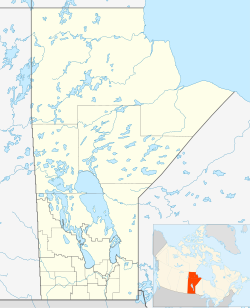| Pinawa Dam Provincial Park | |
|---|---|
IUCN category V (protected landscape/seascape) | |
| Location | Manitoba, Canada |
| Nearest town | Pinawa, Manitoba |
| Coordinates | 50°12′57″N95°55′43″W / 50.21583°N 95.92861°W |
| Area | 250,000 m2 (62 acres) |
| Established | 1985 |
| Governing body | Government of Manitoba |
Pinawa Dam | |
 | |
| Status | Decommissioned |
| Opening date | 1906 |
| Dam and spillways | |
| Impounds | Winnipeg River |
| Reservoir | |
| Creates | Pinawa Channel |
| Power Station | |
| Decommission date | 1951 |
Pinawa Dam Provincial Park is a provincial park located north of Pinawa, Manitoba, Canada, on Provincial Road 520, overlooking the Pinawa Channel. [1]
Contents
It was designated a provincial park by the Government of Manitoba in 1985. [2] The park is 250,000 square metres (62 acres) in size. [2] The park is considered to be a Class V protected area under the IUCN protected area management categories. [3]
The park is home to such fish species as walleye, northern pike, catfish, and smallmouth bass; and such animals as white-tailed deer, black bear, fox, and otter. [4]
